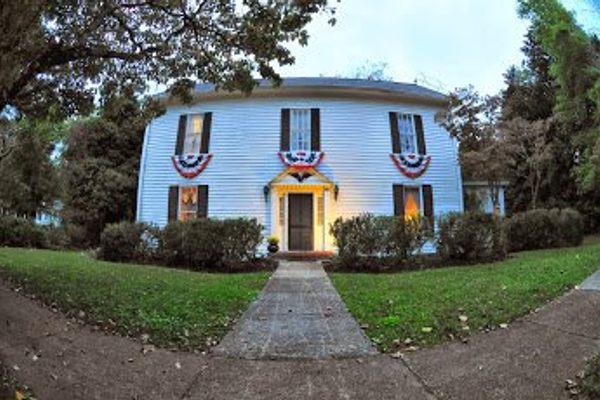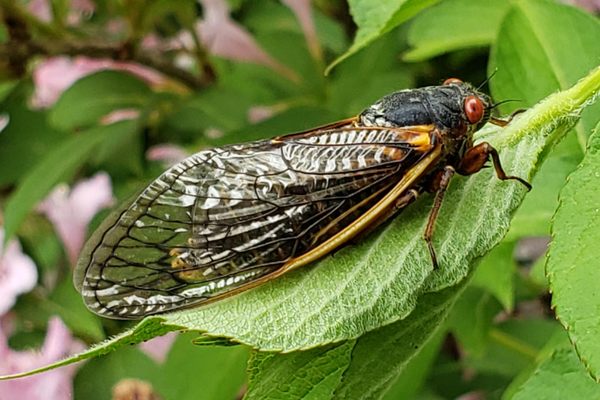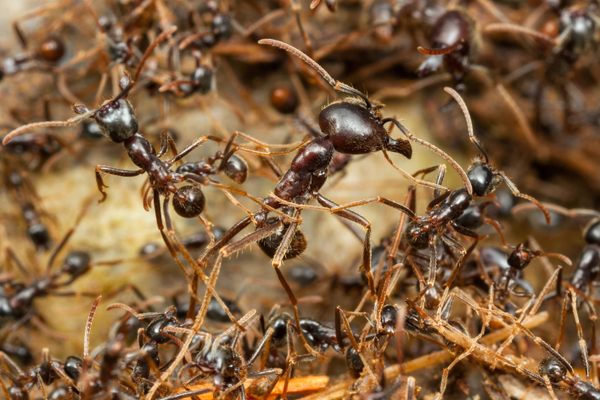Billions of Mosquitoes Are Having a Post-Hurricane Field Day in North Carolina
One resident compared the swarms to snow flurries.

Hurricane Florence flooded the crawl space below Shirley Chao’s house. She had to wrangle a pump and a dehumidifier, and then tackle the mold. Then there were the mosquitoes—huge, persistent, and traveling in hordes. “They are everywhere right now,” Chao says, and not only at night. When she steps into her backyard, she’s greeted by a dozen or so.
Chao is a biologist at Fayetteville State University, in a North Carolina town that is home to 204,759 people. In the aftermath of Hurricane Florence, they’ve all become a smorgasbord for untold millions of giant, aggressive Psorophora ciliata, also known as “shaggy-legged gallinippers.” No mosquitoes are particularly beloved, but these bloodsuckers have an especially bad reputation. One 1897 paper described “the little zebra-legged thing” as “the shyest, slyest, [and] meanest … of them all.”
Florence dumped up to 20 inches of rain on Fayetteville, causing the Cape Fear River to swell well beyond its banks—it rose more than 20 feet in 24 hours. The flood water pooled in yards and streets, and even drowned the “Road Closed” signs that had been set out. It was a paradise for gallinippers.
Female gallinippers lay slews of eggs in the fall or winter in overgrown, damp areas, where “the eggs are good at surviving, kind of riding it out and waiting for a big flood,” Michael Reiskind, an entomologist at North Carolina State University, explained to The Fayetteville Observer. Their voracious larvae eat up other developing mosquitoes and invertebrates—and even tadpoles. Speaking to the Observer, Chao described them as “bullies in water.” The offspring take to the air a few days after a deluge, and they’re big buggers—often weighing three times more than other species.

Most of these newly hatched gallinippers and other species swarming the Carolinas are classified as “nuisance” mosquitoes—pesky, but unlikely to transmit disease. Even so, they’re really freaking people out.
The mosquitoes are so thick that one resident likened swarms of them to snow flurries. Another compared the scene to an invasion from a “bad science fiction movie.” Robert Phillips, of Eastover, was not glad to make a gallinipper’s acquaintance. “I told my wife, ‘Gosh, look at the size of this thing,’” he recounted to The Observer. “I told her that I guess I’m going to have to use a shotgun on these things if they get any bigger.”
While it’s tricky to gauge the exact size of the buzzing boom, multiple entomologists have estimated that Florence gave rise to billions of mosquitoes. Reiskind conducted a small-scale before-and-after census near Raleigh, USA Today reported. Prior to the storm, he found three mosquitoes in a five-minute period. Two weeks after it, he tallied 50.
The horde will probably die off as the weather cools, but since mosquitoes can lay upwards of 100 eggs at a time, “we can’t just wait,” Chao says. “Meanwhile, you’ve got all these adults reproducing like crazy.” Local officials are encouraging residents to drain any standing water that has pooled in trash cans or tires, and the governor allocated $4 million for mosquito-control efforts across 27 counties.
Entomologists are encouraging people to take the usual precautions—wear long sleeves, load up on DEET—and also chill out a little. Though their numbers, their size, and their creepy striped legs definitely seem plague-like, it’s not really a dangerous situation, Reiskind explained to USA Today. “People shouldn’t worry too much,” he said. “They aren’t radioactive or genetically modified or some exotic species. This is just what happens after a hurricane hits.”
















Follow us on Twitter to get the latest on the world's hidden wonders.
Like us on Facebook to get the latest on the world's hidden wonders.
Follow us on Twitter Like us on Facebook